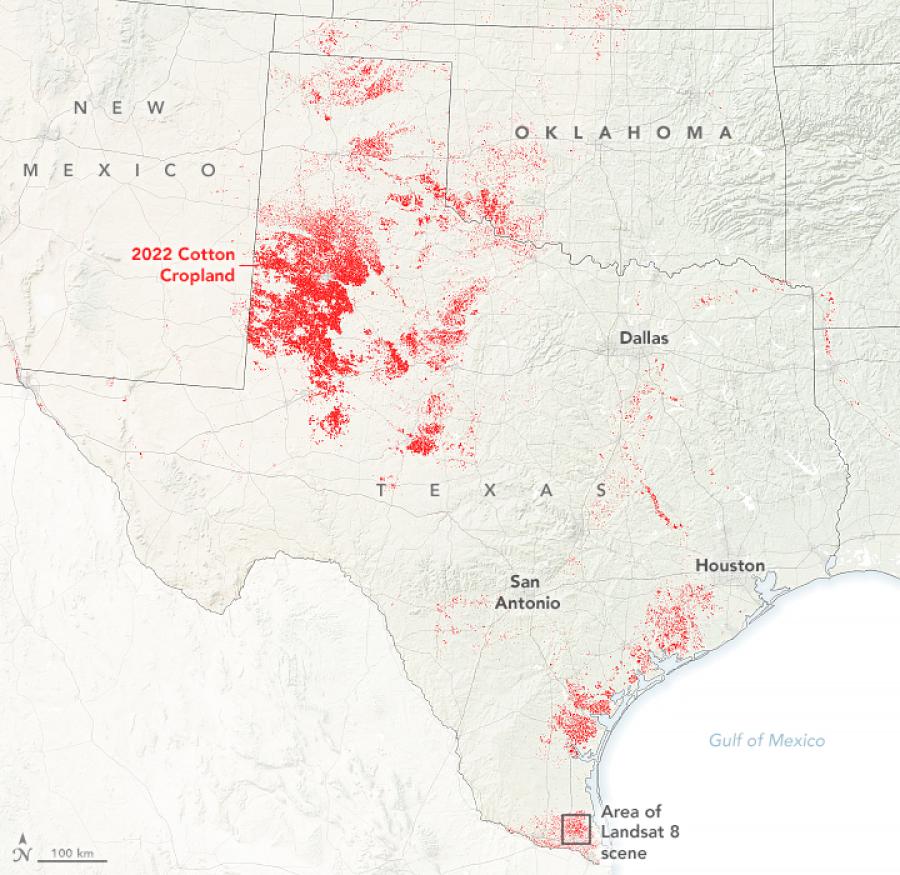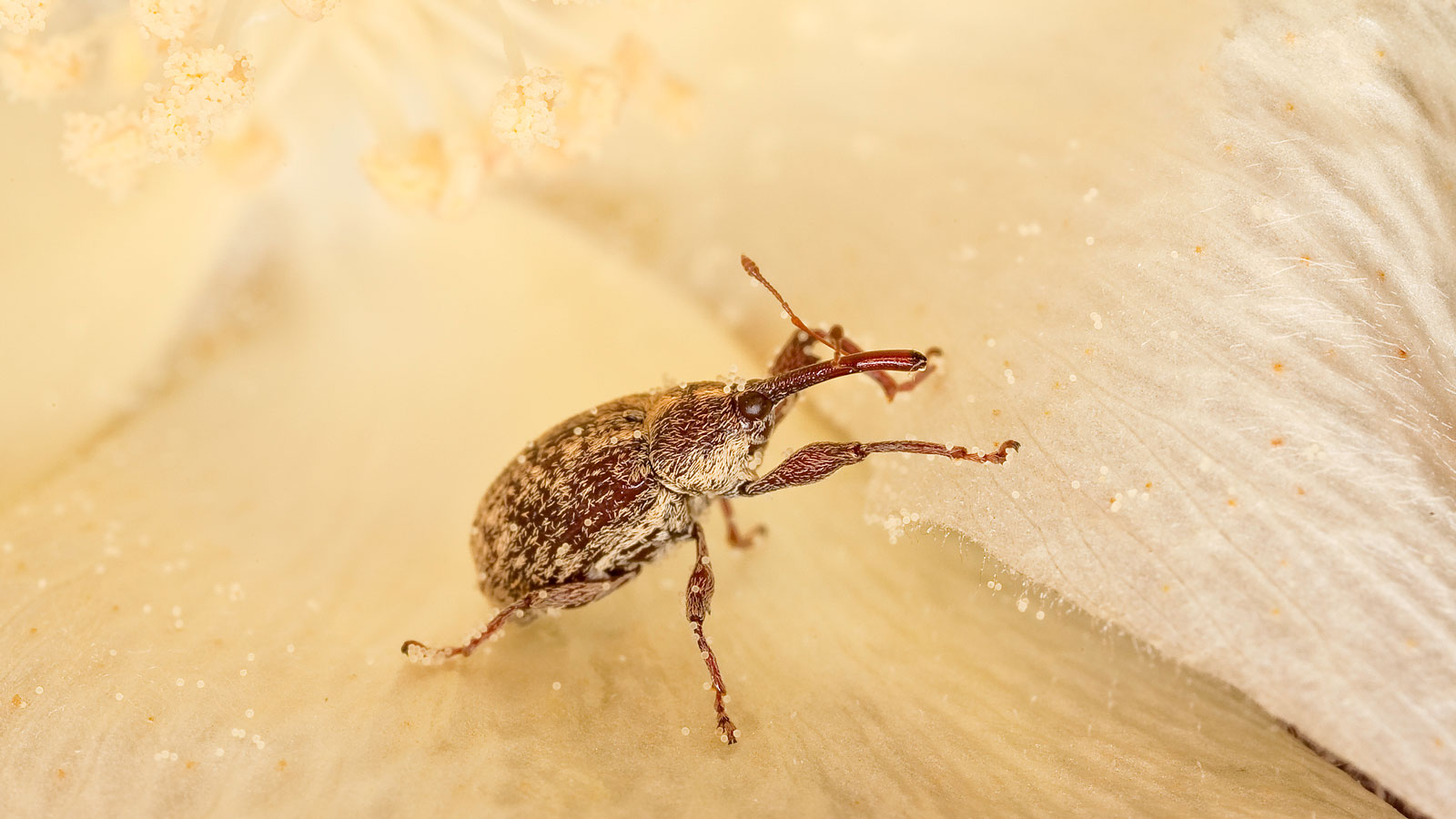AUSTIN, TX – On this day in 1903, a proclamation was made from the steps of the Texas Capitol offering a $50,000 prize for discovering a way to rid Texas of the boll weevil.
This small snout beetle had been ravaging cotton crops in Mexico for at least two millennia. Its introduction into Texas was first announced by Charles W. DeRyee of Corpus Christi in a letter dated Oct. 3, 1894. By 1903, the boll weevil had reached all of East Texas, and by the 1920s, it had spread north and west to the High Plains.
The insect continued to spread through Louisiana, Arkansas, Mississippi, Alabama, the Carolinas, Tennessee, and Virginia. Despite the desperate plea and the substantial reward — $50,000 in 1903 would be $1,785,085.23 in 2024 dollars — the 1903 prize was never awarded to anyone.
The Boll Weevil Invasion
The boll weevil, a small beetle native to Central America, began its devastating march through the Southern United States in the late 19th century. By the early 20th century, it had become a relentless adversary to cotton farmers. The pest's life cycle involves laying eggs inside cotton buds and flowers, where the larvae feed, ultimately destroying the cotton boll and significantly reducing yields. The impact on the cotton industry was catastrophic, with some regions experiencing up to a 75% drop in production. This decline not only affected farmers' livelihoods but also sent ripples through the economy, given cotton's status as a major cash crop.
Economic Impact
The economic repercussions were felt far and wide. Entire communities dependent on cotton farming were plunged into poverty. The South, still recovering from the Civil War and Reconstruction, found itself grappling with another existential threat. Efforts to combat the boll weevil included crop rotation, the development of early-maturing cotton varieties, and extensive pesticide use. Calcium arsenate was found to be reasonably effective against the boll weevil, and during the 1920s, fluorides were introduced. However, these measures offered only temporary relief.
Boll Weevil Eradication: A Complete Success
According to the National Cotton Council of America, the National Boll Weevil Eradication Program ranks alongside Eli Whitney's invention of the cotton gin as one of the greatest advancements ever for the U.S. cotton industry. This federal-state-grower cost-share program has helped thousands of U.S. cotton growers become more competitive and has been beneficial for the environment.
The boll weevil has been eradicated in the Southeast states of Virginia, North Carolina, South Carolina, Georgia, and Florida. Likewise, the boll weevil has been eradicated from Alabama, Tennessee, Missouri, Arkansas, and Mississippi. A small number of boll weevils were captured in Louisiana 15 years ago, but the infestation was detected early enough to combat it effectively.
The Far West is now boll weevil-free in the states of California, Arizona, Oklahoma, and New Mexico.
Texas is generally boll weevil-free today with a few exceptions. In a June 2020 report, the Texas Department of Agriculture's Sunset Committee reported that the Texas Boll Weevil Eradication Foundation was successful in eradicating 97% of the state’s cotton acres of the boll weevil through a combination of trapping and pesticide applications. The result was a 56% increase in cotton yield, the report stated.
Yet, because of Texas' proximity to Mexico, it remains the only cotton-producing state in the U.S. still directly threatened by the insect.
The active battle zones in Texas have seen setbacks over the years resulting from weevils being carried by hurricane winds into areas that were nearly weevil-free. As late as 2022, there were news reports of boll weevil infestations in the Rio Grande Valley.
The warm climate in south Texas with its lack of killing freezes presents challenges in maintaining a non-hostable cotton status. Cotton plants along roadsides, fence rows, and other non-cropping areas can result from seed inadvertently dropped during harvest or dispersed by wind. The lack of a killing freeze for these plants results in nursery areas to maintain or increase boll weevil populations. Similarly, seed dropped in a cotton field at harvest may germinate the following year, even if the producer rotated the field to corn.
A Solution Nearly a Century Later
Despite some setbacks, toward the late 20th century, the boll weevil's reign of terror was nearing its end. Advances in integrated pest management and a concerted, nationwide eradication effort led by the U.S. Department of Agriculture brought hope. The Boll Weevil Eradication Program, initiated in the 1970s, utilized a combination of chemical treatments, pheromone traps, and biological controls to systematically reduce boll weevil populations. By the early 21st century, the program had achieved remarkable success, with the pest being eradicated from most cotton-producing regions in the United States.
According to a 2002 article from KCBD News, the Boll Weevil Eradication Program has been so successful that boll weevils were virtually undetectable in many regions by the early 2000s. This program has not only boosted the competitiveness of U.S. cotton growers but has also been beneficial for the environment by reducing the need for extensive pesticide use.
The Boll Weevil Eradication Program remains in place today. For example, in the Rolling Plains counties around San Angelo and Abilene, a countywide public notice remains active requiring planters to participate in the program.
Sources:

Cotton crops as observed from space

The Boll Weevil
Subscribe to the LIVE! Daily
Required






Post a comment to this article here: